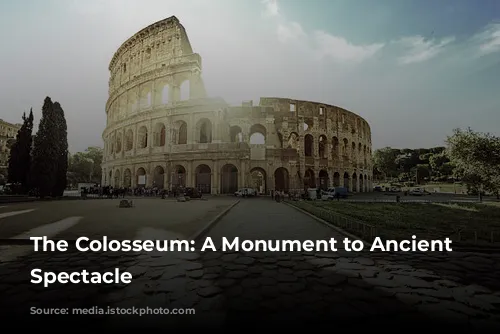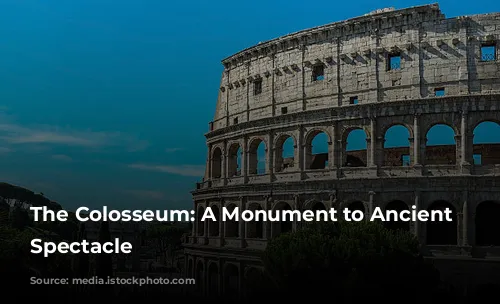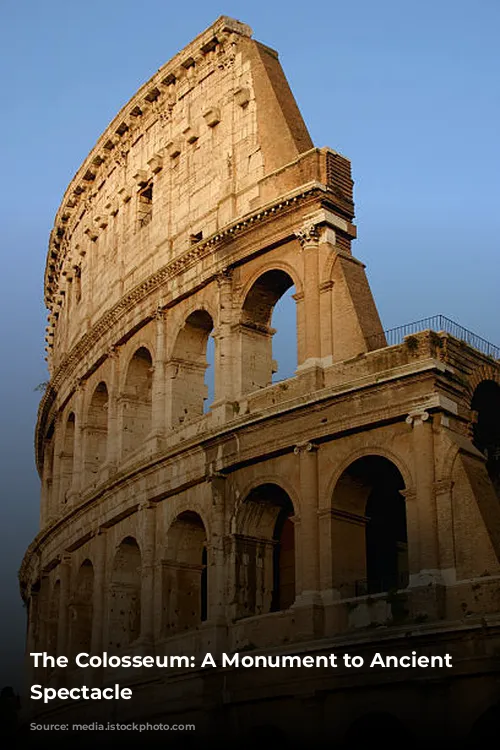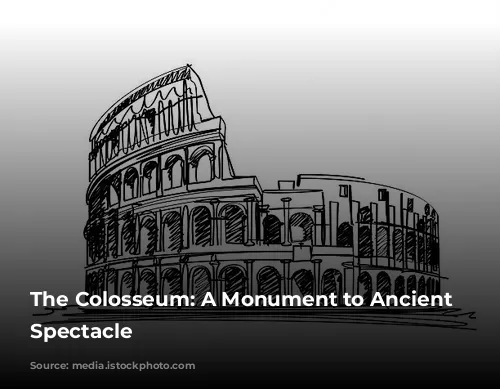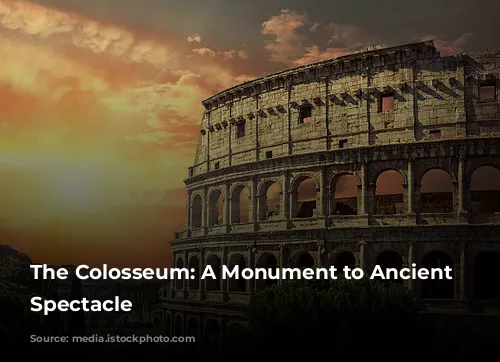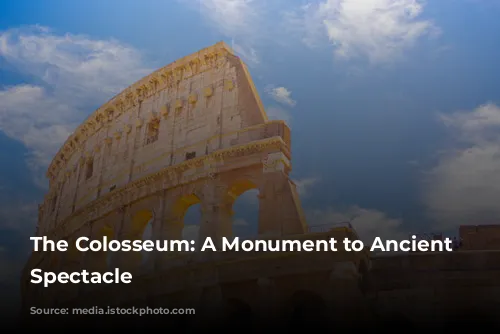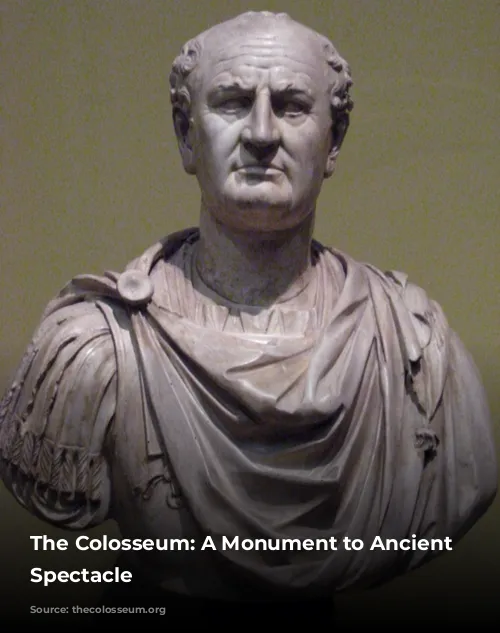The Colosseum stands as a powerful testament to the grandeur and brutality of the Roman Empire. This iconic amphitheater has witnessed centuries of spectacles that ranged from gladiator battles to epic hunts and gruesome executions.
Let’s delve into the fascinating history of this ancient marvel and uncover some intriguing facts that will leave you in awe.
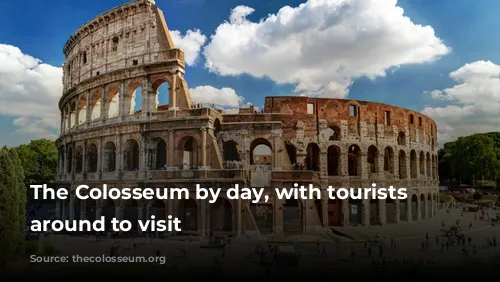
Construction and Labor
The Colosseum’s construction began in 72 AD under the reign of Emperor Vespasian. The ambitious project, however, was completed in 80 AD under his sons, Emperors Titus and Domitian.
The immense labor force involved in this undertaking was predominantly composed of Jewish slaves, overseen by skilled Roman engineers and craftsmen.
This forced labor was a direct consequence of the first Jewish-Roman war. The Temple of Jerusalem was sacked and thousands of Jews were enslaved and transported to Rome.
It is estimated that between 60,000 and 100,000 of these enslaved people labored tirelessly on the construction of the Colosseum.
This historical detail paints a poignant picture of the human cost behind the monument’s grandeur. The Colosseum stands not only as a testament to Roman ingenuity and power, but also as a reminder of the suffering endured by those who built it.
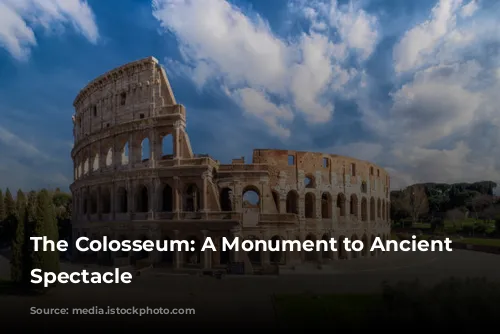
The Colosseum’s Purpose and Name
Why was this colossal structure built? The answer lies in the aftermath of the Great Fire of 64 AD.
Emperor Nero, notorious for his extravagance, had ordered the construction of a luxurious palace for himself on the charred ruins of the city. This Domus Aurea, however, met with fierce resentment from the Roman citizenry.
Upon Nero’s downfall, Emperor Vespasian seized the opportunity to appease the people. He demolished Nero’s palace and ordered the construction of the Colosseum in its place.
The Colosseum was intended to be a grand amphitheater, a public space where all Roman citizens could gather for entertainment. This grand gesture of appeasement was also a strategic move to bolster Vespasian’s popularity and cement his legitimacy as the new emperor.
The Colosseum was initially known as the Flavian Amphitheater, named after the Flavian dynasty. However, its name gradually evolved to “Colosseum,” likely derived from the colossal bronze statue of Emperor Nero that once stood nearby.
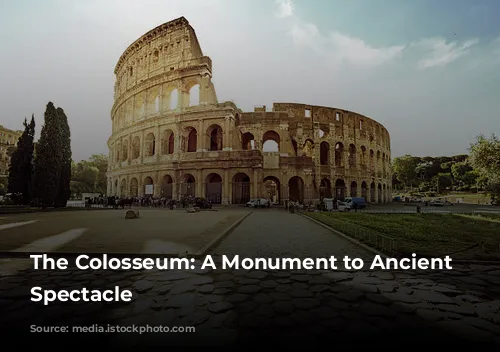
The Colosseum’s Size and Structure
The Colosseum is an oval-shaped structure measuring 189 meters long, 156 meters wide, and 48.5 meters tall. Its sheer size is awe-inspiring, covering an area of 6 acres.
The Colosseum’s outer walls boast three levels of columns adorned in the distinct styles of the ancient world: Doric, Ionic, and Corinthian. Each level features 80 arches, 76 of which were numbered with Roman numerals, serving as guides for spectators to find their seats.
These arches were not merely decorative elements; they played a crucial role in the Colosseum’s functionality. Only 31 of the original 80 arches remain intact, a testament to the building’s long history and the ravages of time.
The Colosseum was constructed using an estimated 100,000 cubic meters of travertine stone, quarried from Tivoli, 20 miles away. Thousands of iron clamps were used to secure the massive stones together, ensuring the structural integrity of this monumental edifice.
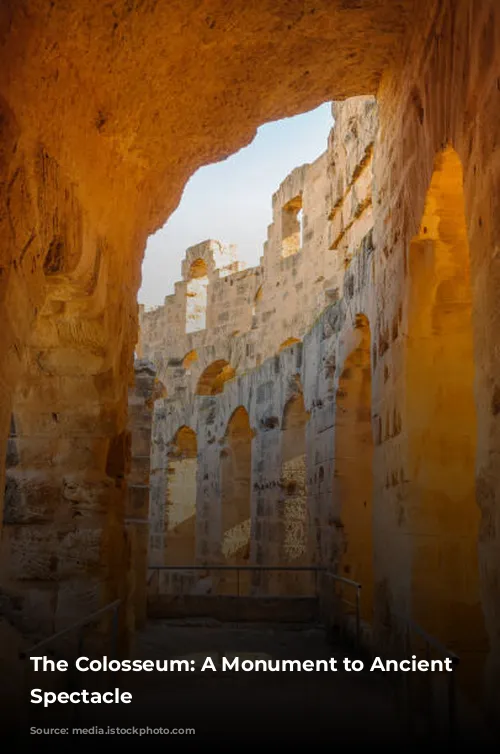
Beneath the Surface: The Hypogeum
Hidden beneath the Colosseum’s majestic facade lies a complex network of tunnels and chambers known as the Hypogeum.
This subterranean labyrinth served as a holding area for gladiators, wild animals, and prisoners awaiting their fate in the arena. Eighty vertical shafts connected the Hypogeum to the arena, allowing for swift access.
The Hypogeum also housed an elaborate system of trap doors through which scenery elements and props could be deployed, adding to the spectacle and drama of the events.
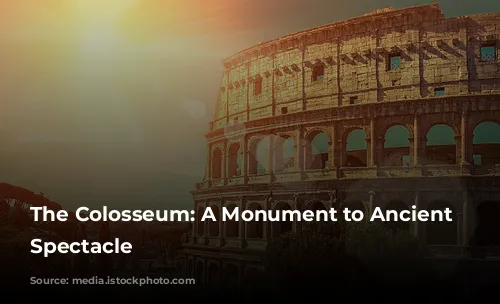
Spectators and Spectacles
The Colosseum was designed to accommodate a vast audience, capable of seating between 50,000 and 80,000 spectators.
The spectacles held within its walls were as diverse as they were brutal. Gladiator battles were the most common, with hunts, executions, and even staged naval battles filling the arena with an atmosphere of excitement and fear.
The Colosseum was a microcosm of Roman society, reflecting its love for spectacle, its embrace of violence, and its fascination with death.
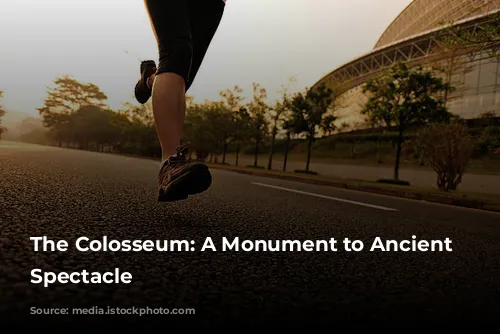
The End of the Arena
The last recorded gladiator battles in the Colosseum took place in 435 AD. However, hunts continued for another century.
While it is tempting to attribute the decline of gladiatorial combat to the rise of Christianity, the reality is far more mundane.
The Colosseum fell into disrepair, and the Roman Empire was in a state of decline. The cost of maintaining the arena, paying for gladiators, and procuring wild animals became increasingly burdensome.
The Colosseum, once a symbol of Roman power, became a casualty of economic constraints and a changing world.
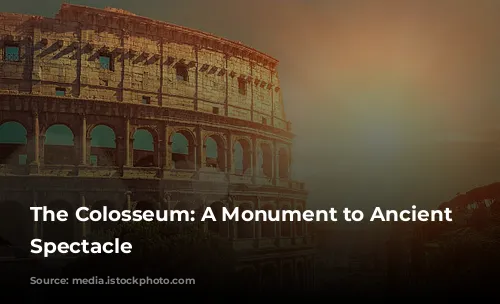
The Colosseum Today
Today, the Colosseum stands as a UNESCO World Heritage Site and a testament to the enduring legacy of the Roman Empire.
It is a popular tourist destination, attracting over 7 million visitors annually. The Colosseum has witnessed the rise and fall of empires, the passage of centuries, and the changing tides of history.
This ancient amphitheater continues to inspire awe and fascination, reminding us of the grandeur and complexity of the past.
The Colosseum is more than just a ruin; it is a living monument to the human spirit, a symbol of our enduring fascination with spectacle, power, and the relentless march of time.
